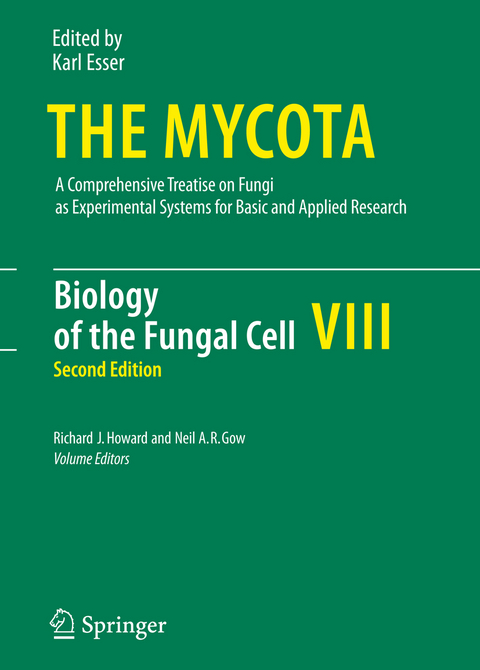
Biology of the Fungal Cell
Springer Berlin (Verlag)
978-3-642-08955-8 (ISBN)
The Endomembrane System of the Fungal Cell.- Motile Tubular Vacuole Systems.- The Fungal Woronin Body.- A Molecular and Genomic View of the Fungal Cell Wall.- The Cytoskeleton and Polarized Growth of Filamentous Fungi.- Polarised Growth in Fungi.- Signal Transduction and Morphogenesis in Candida albicans.- Mating in Candida albicans and Related Species.- Ions Regulate Spore Attachment, Germination, and Fungal Growth.- Biomechanics of Invasive Hyphal Growth.- Cell Biology of Fungal and Oomycete Infection of Plants.- Fair Trade in the Underworld: the Ectomycorrhizal Symbiosis.- Network Organisation of Mycelial Fungi.
From the reviews of the first edition
"The volume is well illustrated and certainly realizes the primary aim of "The Mycota", namely to highlight developments in both basic and applied research into fungal systems." (Microbiology Today)
"The Editors´ aim 'to provide a selected sampling of contemporary topics at the forefront of fungal cell biology' has certainly been achieved. Indeed, it is hard to imagine any mycologist not finding something fascinating in each of the chapters. ... Further, the volume is packed with material that will be extremely useful for those presenting basic courses in mycology - especially because of the many fine explanatory line drawings." (Mycological Research)
"The editors have done a magnificant job, and every chapter repays careful reading. ... This book will be extremely valuable to all scientists, not only mycologists sensu stricto, whose work involves experimentation with fungi. I would recommend it not only for library purchase, but also to individual scientists wanting an up-to-date overview of some of the most interesting advancing fields in fungal cell biology. It is beautifully produced in typical Springer style, and although expensive it is excellent value for money." (Mycologist)
| Erscheint lt. Verlag | 16.11.2010 |
|---|---|
| Reihe/Serie | The Mycota |
| Zusatzinfo | XX, 341 p. |
| Verlagsort | Berlin |
| Sprache | englisch |
| Maße | 193 x 270 mm |
| Gewicht | 786 g |
| Themenwelt | Naturwissenschaften ► Biologie ► Mikrobiologie / Immunologie |
| Naturwissenschaften ► Biologie ► Zellbiologie | |
| Schlagworte | Cell Biology • cell structure • Cytoskeleton • Eukaryota • eukaryote • Fungi • Morphogenesis • Mycology • Mykologie • pathogen • Pathogene • Pilze • signal transduction • Zellbiologie • Zellstruktur |
| ISBN-10 | 3-642-08955-0 / 3642089550 |
| ISBN-13 | 978-3-642-08955-8 / 9783642089558 |
| Zustand | Neuware |
| Haben Sie eine Frage zum Produkt? |
aus dem Bereich



